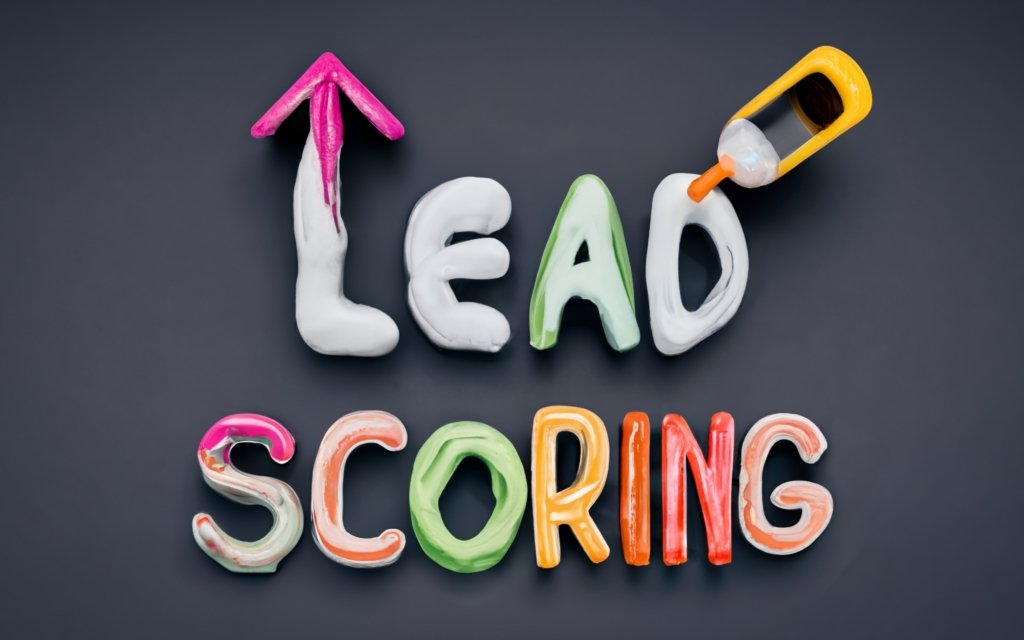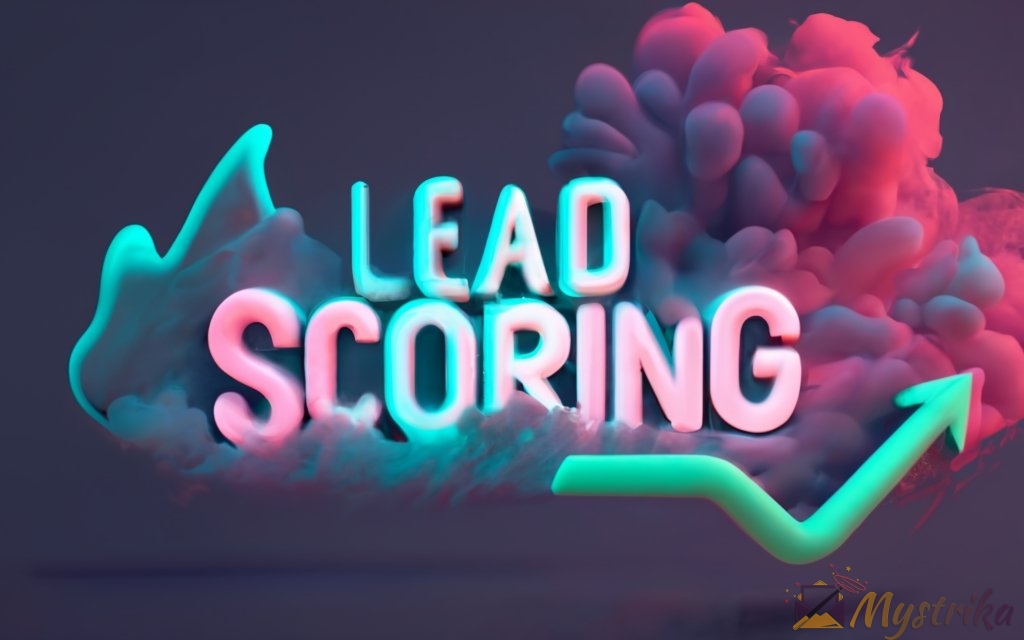Unleash the revenue accelerating power of lead scoring within Salesforce Marketing Cloud. Find out how to track engagement, define automated rules, identify sales-ready prospects, and leverage data to optimize your marketing strategy. This comprehensive guide covers everything from building scoring models to maximizing ROI across teams.
Using Lead Scores to Drive Marketing Strategy
Once you have implemented a lead scoring system in Marketing Cloud, the real value comes from leveraging those scores to optimize your marketing strategy and processes. Lead scoring provides a wealth of actionable data to help focus your team’s efforts, align with sales, and ultimately convert more leads into customers. Here are some of the key ways lead scoring can and should inform your ongoing marketing operations.
Segment Leads for Targeted Nurturing Campaigns
One of the biggest benefits of lead scoring is the ability to categorize and segment your leads based on their level of readiness. Leads with lower scores likely require further nurturing and education to move them down the funnel. Segmenting by lead score allows you to group these leads together and develop targeted content and journeys to address their specific needs and interests.
For example, you may create defined tiers like:
- Tier 1: Lead score 0-20
- Tier 2: Lead score 21-40
- Tier 3: Lead score 41-60
Leads in Tier 1 may be subscribed to your email newsletter but have not engaged significantly beyond that. You would nurture them with more introductory content about your product category and basic education about the problems you solve.
Leads in Tier 2 have demonstrated some interest, like visiting pricing pages or watching product demos. They would receive more detailed content about your specific solutions and value proposition.
And for leads in Tier 3 nearing sales readiness, you can provide guides for evaluating and selecting solutions, ROI calculators, and other more advanced content.
Segmenting leads for tailored nurturing helps you develop meaningful relationships over time and guide leads efficiently through the buyer’s journey.
Identify Sales-Ready Leads for Immediate Outreach
Another benefit of well-defined lead scoring rules is the ability to automatically detect when a lead passes a threshold indicating they are ready for immediate outreach. For example, if a lead hits a score of 75 or more, your system can trigger a workflow to notify sales and assign the lead for prompt follow-up.
Clear scoring rules and defined sales-ready threshold takes the guesswork out of determining when a lead should be contacted. Timely and smooth handoff of qualified leads to sales is critical to increase conversion rates. With scoring, you are enabling the sales team to focus energy on hot prospects at the optimal moment of interest.
You can also develop tiered sales notification workflows based on lead score ranges. For example:
- Lead score 0-50: Remains with marketing for continued nurturing
- Lead score 51-74: Notified to sales for follow-up within 1 week
- Lead score 75+: Immediate sales notification and outreach
Automatic sales notifications based on lead score gets your solution in front of motivated buyers at the right time when they are ready to have a conversation. This level of automation and prioritization is a key driver for improving marketing and sales productivity.
Provide Sales Team with Actionable Insights
Lead scoring data does more than just identify who is sales-ready. It provides a wealth of insights sales teams can leverage to connect with prospects on a personal level and accelerate deals.
Within each scored lead record, your sales reps should have visibility into the specific behaviors and attributes that contributed to the score. This gives them a snapshot of interests, pain points, and level of engagement.
With these insights, sales reps can reference specific content the lead accessed, topics they appear to care about, and interactions they have had across channels. This allows reps to have more meaningful and relevant conversations that move leads down the funnel.
Some examples of how to equip the sales team with actionable intel from lead scoring data:
- Create snapshot reports of the lead’s scoring factors and recent behaviors
- Log scoring details and notes directly on the lead’s record
- Sync key insights to CRM fields for visibility
- Notify reps of recent prospect behaviors that indicate interest
The more you can share lead scoring insights with sales, the better equipped they will be to pick the right approach with each prospect. Their outreach can be tailored and converational instead of generic.
Continuously Optimize Scoring Model and Campaigns
To get the most long-term value out of lead scoring, you must continually monitor data and optimize your scoring model as needed. Here are some best practices for ongoing refinement:
Review Lead Velocity Regularly: Analyze how long it takes for leads to move from initial entry to sales handoff. Longer velocity may indicate weak spots in your scoring model or nurturing programs. Identify common patterns among slow-moving leads.
Examine Sales Acceptance Rates: If sales is rejecting or disqualifying a high number of scored leads, it’s a sign your model needs adjustment. Collaborate with sales to pinpoint missing ingredients for a qualified lead.
Analyze Impact on Conversions: Ultimate proof of lead scoring success is revenue. Track conversion rates before and after scoring implementation to quantify results. Look at conversion rate increases by tier to see what is working.
Optimize Pathways and Journeys: Conversion gains will plateau without optimizing your nurturing for each tier. Examine the average path and make changes. Introduce new journeys or content where needed.
Refine Scoring Factors and Models: Review the factors, rule weights, and algorithm regularly. Adjust based on patterns in your data and changes to business goals. Keep evaluating to have the best model possible.
With continuous improvement of both scoring models and multitiered lead nurturing, you will realize the full impact of lead scoring on your sales process, pipeline velocity, and closed revenue.
Aligning Marketing and Sales with Shared Scoring
For lead scoring to function optimally, it cannot be a marketing-only initiative. Marketing and sales teams must be aligned and work together to achieve scoring success. Here are some tips on getting both teams onboard:
Smooth hand-off of scored leads from marketing to sales – Workflows for scoring model and sales handoffs should be mutually understood and agreed upon. Establish procedures and specify what constitutes a qualified lead.
Provide sales with insights into lead behavior – Equip sales with details on what interactions drove lead score, not just the score itself. Context helps sales better understand and engage each prospect.
Shorten sales cycle with relevant, timely outreach – Timely notifications and seamless lead handoff to sales at the ideal moment shortens lag time. Quicker response when leads are scored as sales-ready gets results.
Set joint goals around lead velocity and conversion – Align around targets for improving marketing qualified lead (MQL) to sales qualified lead (SQL) transition rates. Track jointly.
Involve sales in shaping scoring models – Sales knows first-hand what factors indicate a lead is sales-ready. Regularly solicit their input to improve model accuracy.
Share feedback for continuous improvement – Have sales share feedback on scoring model relevancy and nurturing effectiveness to further optimize.
With marketing and sales working together on lead scoring, you can achieve orchestration across functions. Joint ownership of the lead scoring process and shared use of data is the recipe for maximizing its impact.
Focusing Efforts on High-Potential Leads
Lead scoring enables both marketing and sales to double down on the leads showing real buying potential vs. wasting time and effort with low-quality leads. Here are some of the ways lead scoring supports focusing on high-value prospects:
Prioritize outreach to leads with highest scores – Campaigns can be sequenced to engage hot leads first and delay lower-scored leads until they are further nurtured.
Automate lead assignment based on tier – Route leads to sales reps or specialized outreach teams based on lead score thresholds indicating fit and readiness.
Reduce wasted time chasing unqualified leads – Strict cutoffs on low scores allow early disqualification of leads who are not serious. Efforts redirect to warmer prospects.
Develop targeted playbooks by tier – Sales process can be tailored for each tier, with higher-touch for closer leads and automated drips for colder leads requiring nurturing.
Tailor messaging and offers to level – Marketing emails and ad messaging can be adapted based on a lead’s current score to send the most relevant content.
Prioritize sales resources – With finite time, sales reps focus on building relationships with high scoring leads versus spreading thinly across all leads.
Refine ideal customer criteria – Frequently analyze your highest scoring converted leads to recognize common patterns and adjust your ideal customer profile accordingly.
With the help of lead scoring and tiered lead buckets, your demand generation efforts can take a more disciplined, ROI-focused approach. Executed well, this strategy filters and surfaces the leads with the most potential value to your business.

So What can you do for Lead Scoring Success
Implementing an effective lead scoring program takes work but pays major dividends when done right. Here are some best practices to set your Marketing Cloud lead scoring initiative up for maximum impact:
Outline ideal customer profile and map to scoring – Develop a detailed target buyer persona as the foundation for your model. Ensure scoring factors reflect attributes of your ideal customer.
Maintain balance between automation and personalization – Leverage scoring automation but still nurture leads in a genuine way. Avoid overtly robotic messaging.
Review data frequently and tweak model accordingly – Be prepared to constantly monitor, evaluate results, and refine your chosen scoring algorithm and rules.
Share insights across marketing and sales teams – Create transparency on scored lead data and make insights easily accessible to sales reps.
Use scores to determine nurturing and sales strategies – Let tiered lead score segments dictate the type and sequence of campaigns and sales playbooks used.
Monitor impact on pipeline and revenue – Evaluate measurable downstream metrics like pipeline growth, velocity, deal sizes, and sales cycle compression.
Take an iterative approach – Start small with a pilot group of leads. Demonstrate wins, build on lessons learned, and expand scoring in phases.
Leverage other data for deeper insights – Combine scoring with persona and intent data for a multidimensional view of your leads.
Make adjustments based on product and market – Tailor factors and algorithms based on your solution complexity, sales cycle length, industry nuances, and other variables.
With the right strategies and commitment to continuous optimization, Marketing Cloud lead scoring can take your ability to identify and convert qualified prospects to the next level.
Let me know if you would like me to modify or expand on any part of this section. I can provide more details, examples, and best practices for successful lead scoring.

Best Practices for Lead Scoring Success
Implementing an effective lead scoring program takes work but pays major dividends when done right. Here are some proven best practices and strategies to set your Marketing Cloud lead scoring initiative up for maximum business impact.
Outline Ideal Customer Profile and Map to Scoring
The foundation for developing an accurate lead scoring model is having a detailed understanding of your ideal customer. Outline typical buyer personas with precision covering elements like:
- Job roles and titles
- Industry verticals
- Company size/revenue
- Technologies used
- Business challenges
- Purchasing needs
- Buying process and players
- Behavioral traits
With well-defined personas, you can then map relevant scoring factors to attributes of your ideal customers. For example:
- Job title matches target role = 25 points
- Visits pricing pages multiple times = 15 points
- Clicks email links about top business challenge = 10 points
Take the time upfront to thoroughly research your best-fit accounts, conduct buyer interviews, and analyze existing customer data. The more insights you have into your ideal customer profile, the better your scoring will align.
Maintain Balance Between Automation and Personalization
While lead scoring is powered by automation, that doesn’t mean the personal human touch isn’t still important. Once leads are segmented by score, targeted nurturing content and journeys should still feel genuine and humanized, not overtly robotic.
Avoid sending highly-scored leads directly into a series of overly-automated campaigns just because you can. Make sure touchpoints are relevant, helpful, and respect the relationship you are trying to build. Lead scoring works best when technology and personalization work hand-in-hand.
Review Data Frequently and Tweak Model Accordingly
Be prepared to constantly monitor lead scoring data, evaluate results, and refine your chosen algorithm and rules accordingly. Set aside regular intervals to review elements like:
- Score distribution across leads
- Time to move through tiers
- Conversion rates by tier
- Sales team feedback on leads
As you uncover new patterns or changes in the market, tweak factor weights and thresholds to keep the model optimized. Don’t “set and forget” your scoring approach. Expect to make incremental improvements over time as new insights emerge.
Share Insights Across Marketing and Sales Teams
For lead scoring success, transparency into data and insights must exist across both marketing and sales teams. Some best practices on driving cross-team visibility:
- Make lead scoring dashboards and reports accessible to both groups
- Log key scoring data directly on lead records for sales reference
- Automate emails to sales highlighting targeted prospect behaviors
- Hold regular meetings to evaluate results and surface new findings
- Foster constant dialogue on ways to refine model and processes
With open communication and shared access to data, sales has context to capitalize on scored leads. And marketing can continuously adapt programs based on sales feedback.
Use Scores to Determine Nurturing and Sales Strategies
Tiered lead score segments should directly dictate the type and sequence of campaigns, content, and sales playbooks used across the buyer’s journey. Map distinct strategies to each segment:
Tier 1 (Low score)
- Focus on broad education and awareness content
- Highly automated nurturing like email drip campaigns
- Less frequent or batch communication cadences
Tier 2 (Medium score)
- Advance to more targeted content on use cases and solutions
- Integrate one-to-one communication like phone and chat
- Accelerate nurturing pace and urgency
Tier 3 (High score)
- Provide guides, cheat sheets, ROI calculators, and trials
- Implement high-touch sales consultation and demos
- Immediate and persistent outreach cadence
Synergize your lead engagement strategies across teams to align with segment-specific scores and needs.
Getting Leadership Buy-In
For a lead scoring initiative to receive the attention and resources required, executive-level sponsorship is crucial. Some tips on obtaining leadership buy-in include:
Present revenue benefits of increased efficiency
Make the ROI case by quantifying expected gains in conversion rates, average deal sizes, and reduced sales cycles driven by lead prioritization.
Highlight success stories from other companies
Social proof is powerful. Reference specific lead scoring case studies in your industry with hard metrics on the uplift achieved.
Start small and demonstrate quick wins
Propose an initial pilot focused just on key segments to validate the concepts and build confidence before full scale rollout.
Provide regular reports on impact and optimization
Share progress and iterative improvements to prove the performance lift and opportunity for further tuning of the model.
With a fact-based business case and demonstrated results, executives are more likely to fully embrace lead scoring and allocate resources to expand it.
Monitoring Performance and Maximizing Value
To maximize the value of lead scoring over the long-term, businesses must closely monitor performance before and after implementation, and continuously optimize. Key metrics to track include:
Track key conversion metrics before and after
Compare critical conversion funnels like lead-to-MQL, MQL-to-SQL, and SQL-to-customer rates. Lift in these areas demonstrates lead scoring effectiveness.
Calculate changes in sales efficiency and revenue
Determine metrics like revenue per sales rep and cost per sale. Declines illustrate increased productivity and ROI from scoring prioritization.
Identify areas for improvement in model and workflows
Analyze trends in scoring factors, tier velocity, and conversion paths to uncover optimization opportunities.
Utilize scoring insights for sales coaching and training
Leverage scoring data to provide sales reps visibility into what activities influence a lead’s trajectory. Apply findings to sharpen selling skills.
With a results-focused approach, businesses can continually refine lead scoring practices to improve marketing and sales performance. The key is analyzing the right data to maximize your program.
Additional Tips for Lead Scoring Achievement
Here are some additional tips and considerations when implementing lead scoring with Marketing Cloud:
Take an iterative approach – Start small with a pilot group of leads. Demonstrate wins, build on lessons learned, and expand scoring in phases.
Leverage other data for deeper insights – Combine scoring with persona and intent data for a multidimensional view of your leads.
Make adjustments based on product and market – Tailor factors and algorithms based on your solution complexity, sales cycle length, industry nuances, and other variables.
Provide ongoing user training – Don’t assume users across teams understand scoring. Provide continuous training on interpreting and applying data.
Monitor scoring model accuracy – Calculate model precision in predicting conversions to identify where to tune and refine algorithm.
Integrate with CRM workflows – Connect lead score data with workflows for notifications, ownership assignment, and automatic lead actions.
Enrich with external data – Incorporate external scores on company health or social signals where possible to expand model inputs.
Test and experiment – A/B test different scoring factors and rules with control groups to determine what variables have greatest impact.
Safeguard data quality – Ensure your underlying lead data is clean and intact before implementing scoring dependencies on it.
With the right strategies and commitment to continuous optimization, Marketing Cloud lead scoring can become a core capability for identifying qualified buyers and driving revenue growth.
Let me know if you would like me to modify or expand on any part of this section. I can provide more details, examples, and best practices for successful lead scoring implementation and adoption.

Key Takeaways and Next Steps
Implementing an effective lead scoring program requires effort but delivers immense value by aligning marketing and sales around your highest potential prospects. Here are the key takeaways:
- Lead scoring helps focus efforts on prospects demonstrating real buying signals, not just awareness. Scoring models quantify engagement, fit, and sales readiness.
- While basic scoring exists in Marketing Cloud, robust capabilities require customization like web tracking, scoring rules, and cross-channel data integration.
- Well-defined lead segments based on score enable tailored, relevant nurturing and sales playbooks specific to each tier of lead.
- Timely hand-off of sales-ready leads, insights into prospect behavior, and cross-team collaboration are critical for lead scoring success.
- Continuous monitoring of data and results, paired with optimization of scoring models, workflows, and content is essential to maximize value over time.
- Getting executive buy-in, demonstrating quick wins, and tracking ROI are key to building a sustainable lead scoring program.
For next steps, start by profiling your ideal buyer personas and outlining proposed scoring factors and rules. Then work backwards to determine what data integrations are needed from web and email activity. With a plan in place, initiate a pilot program and refine as you go to build capabilities and confidence. Leverage scoring insights to transform sales and marketing productivity.
Let me know if you would like me to expand or modify the key takeaways and next steps outlined here in any way. I can provide additional details on getting started with lead scoring in Marketing Cloud.

Frequently Asked Questions
What are the key benefits of lead scoring?
Lead scoring provides a quantitative approach to identifying and prioritizing leads based on fit, interest, and readiness. Benefits include increased sales efficiency, accelerated deal velocity, and improved conversion rates by focusing efforts on high-potential prospects.
How can I track website engagement for lead scoring?
Install web analytics tracking scripts like Google Analytics or use Einstein Website Recommendations to collect visitor behavior data. Store insights in Data Extensions. Assign scoring values to actions like page visits, content downloads, video views, etc. based on indication of interest.
What email data can factor into lead scoring?
Leverage open and click tracking data, as well as engagement metrics from Einstein in Marketing Cloud. Credit points for opens, clicks, email subtype preferences, and frequency/recency of email interaction.
How do I develop a lead scoring model?
Analyze historical deal data and identify patterns that indicate buying potential. Collaborate with sales on influential scoring factors. Assign weights to activities based on significance. Test models and refine over time based on performance data.
What are best practices for tiered lead nurturing?
Develop segmented journeys with messaging and offers tailored to the lead’s score tier. Low: Broad education, moderate cadence, automated campaigns. Middle: Use case content, increased engagement. High: Trials, demos, high-touch sales consultation.
How can marketing and sales align on lead scoring?
Agree on score thresholds and handoff criteria. Provide sales visibility into activity driving scores. Set joint metrics around velocity and conversion rates. Involve sales in shaping the model. Share results and refinements regularly.
How do I track the ROI of lead scoring?
Compare key conversion funnels before and after scoring implementation. Look for increases in lead-to-customer rates, shorter sales cycles, larger deal sizes, and improved sales productivity like revenue per rep.
What are key considerations when starting out?
Document detailed buyer personas. Start with a pilot group. Review data frequently and expect to iteratively refine model. Expand scope gradually as you demonstrate results. Obtain executive buy-in by highlighting quick ROI.
Let me know if you would like me to add any other common questions and answers about Marketing Cloud lead scoring. I can also provide more details on any of the topics covered above.

